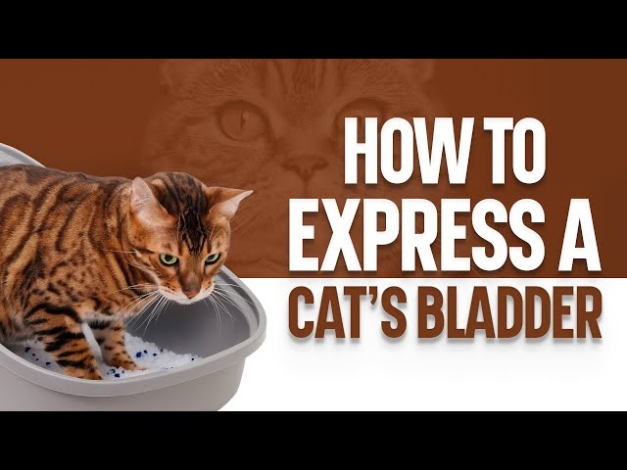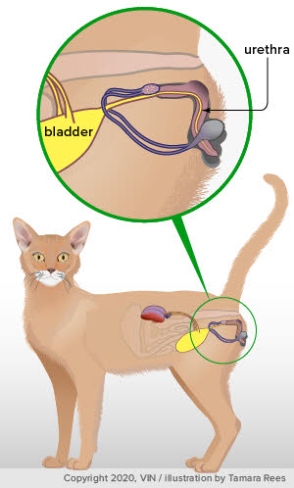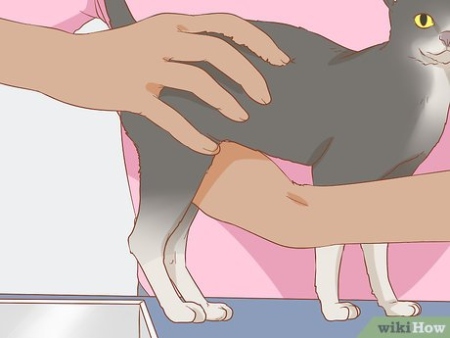Purr-fect CommuniCation: Speaking Cat with Your Furry Friend
Welcome to the wonderful world of feline communication! Cats are mysterious creatures with a complex language all their own. From the gentle purring to the fierce hissing, they have a wide range of vocalizations and body language that they use to express themselves. As a cat owner, it is important to understand and speak their language to strengthen your bond with your furry friend.

Image Source: ytimg.com
One of the most common ways cats communicate with us humans is through their purring. While it is often associated with contentment and happiness, purring can also be a sign of stress or discomfort. Pay attention to the context in which your cat is purring to decipher its true meaning. Is your cat kneading its paws and rubbing against you while purring? This likely means they are feeling relaxed and affectionate. On the other hand, if your cat is purring while hiding or crouching, it might indicate that they are feeling anxious or scared.
In addition to purring, cats use a variety of vocalizations to communicate with us. From meows and yowls to chirps and trills, each sound has a different meaning. Pay attention to the tone and volume of your cat’s meows to understand what they are trying to tell you. A short, high-pitched meow might indicate excitement or a request for attention, while a long, low-pitched yowl could signal pain or discomfort.

Image Source: marylandpetemergency.com
Body language is another important aspect of feline communication. Cats are masters of nonverbal cues, using their ears, tail, and posture to express their emotions. For example, a cat with flattened ears and a twitching tail is likely feeling agitated or defensive. Conversely, a cat with relaxed ears and a gently swaying tail is probably feeling content and at ease.
To truly speak cat with your furry friend, it is essential to observe and interpret their body language in conjunction with their vocalizations. By paying attention to the subtle cues your cat is giving you, you can better understand their needs and feelings, strengthening your bond and enhancing your relationship.

Image Source: wikihow.com
In addition to verbal and nonverbal communication, there are other ways to connect with your cat on a deeper level. Spending quality time together, playing games, and providing a comfortable and stimulating environment are all important factors in building a strong relationship with your feline friend. By engaging with your cat in these ways, you can strengthen your bond and create a harmonious living environment for both of you.
So, next time you interact with your furry friend, remember to pay attention to their purrs, meows, and body language. By speaking cat with your cat, you can unleash their true personality and deepen your connection with one another. Enjoy the journey of feline communication and embrace the unique bond you share with your beloved pet.
Get Fluent in Feline: Expressing Your Cat‘s Needs Clearly
Welcome to the ultimate guide on how to express your cat’s needs clearly. As a cat owner, it’s important to be able to understand and communicate with your furry friend effectively. Cats may not speak English, but they do have ways of expressing their needs and emotions. By learning how to interpret your cat’s body language and vocalizations, you can ensure that your cat is happy, healthy, and well cared for.
First and foremost, it’s crucial to pay attention to your cat’s body language. Cats are masters of communication through subtle gestures and movements. For example, if your cat arches their back and puffs up their fur, they may be feeling threatened or scared. On the other hand, if your cat kneads their paws on a soft surface and purrs loudly, they are likely feeling content and relaxed.
Another important aspect of feline communication is vocalization. Cats have a wide range of vocalizations, from meows and purrs to hisses and growls. Each sound has its own meaning, so it’s essential to pay attention to the context in which your cat is vocalizing. For example, a short, high-pitched meow may indicate that your cat is hungry or wants attention, while a low, guttural growl may signal aggression or fear.
In addition to body language and vocalizations, it’s crucial to understand your cat’s basic needs. Cats have specific needs when it comes to food, water, litter boxes, and playtime. By ensuring that these needs are met, you can help your cat feel safe, secure, and loved.
When it comes to expressing your cat’s bladder, there are a few key things to keep in mind. Cats are fastidious creatures who prefer clean litter boxes. If your cat is urinating outside of the litter box, it may be a sign of a medical issue or behavioral problem. In this case, it’s essential to consult with your veterinarian to rule out any underlying health issues.
If your cat is having trouble urinating or is showing signs of discomfort, it may be necessary to express their bladder manually. This should only be done under the guidance of a veterinarian, as improper technique can cause harm to your cat. Your veterinarian can teach you the proper technique for expressing your cat’s bladder safely and effectively.
In conclusion, communicating effectively with your cat is essential for building a strong bond and ensuring their well-being. By paying attention to your cat’s body language, vocalizations, and basic needs, you can become fluent in feline language and provide the best possible care for your furry friend. Remember, a happy cat is a healthy cat, so take the time to understand and express your cat’s needs clearly. Your cat will thank you for it!
Understanding Cat Body Language
Unleash Your Cat’s Bladder: A Comprehensive Guide to Expressing Your Feline Friend in English
Unlocking the Purr-spective: Understanding Cat Body Language
Have you ever looked at your cat and wondered what they were thinking? Cats are mysterious creatures, often keeping their thoughts hidden behind their enigmatic eyes. But fear not, for understanding cat body language can help you unlock the purr-spective of your feline friend and strengthen your bond with them.
One of the most important aspects of understanding cat body language is recognizing their different types of purrs. A gentle, rhythmic purr usually signifies contentment and happiness, while a louder, more insistent purr may indicate excitement or even discomfort. Pay attention to the context in which your cat purrs to better understand their emotions.
Another key element of cat body language is their tail. A raised tail with a slight curl at the tip often means that your cat is feeling friendly and approachable. On the other hand, a puffed-up tail usually indicates fear or aggression. By observing your cat’s tail movements, you can gauge their mood and respond accordingly.
Cats also communicate through their ears. A relaxed cat will have their ears in a neutral position, while ears flattened against the head may indicate fear or anger. By paying attention to your cat’s ear movements, you can better understand their emotional state and provide them with the support they need.
Furthermore, a cat’s body posture can reveal a lot about how they are feeling. A cat that is crouched low to the ground with their body tense may be preparing to defend themselves, while a cat that is stretched out and relaxed is likely feeling comfortable and at ease. By observing your cat’s body language, you can anticipate their needs and ensure that they feel safe and secure.
In addition to their verbal and non-verbal cues, cats also use facial expressions to communicate with their humans. A slow blink from your cat is often considered a sign of affection and trust, while dilated pupils may indicate excitement or fear. By interpreting your cat’s facial expressions, you can deepen your connection with them and strengthen your bond.
Overall, understanding cat body language is essential for building a strong and harmonious relationship with your feline friend. By paying attention to their purrs, tail movements, ear positions, body posture, and facial expressions, you can unlock the purr-spective of your cat and communicate with them in a way that strengthens your bond and enhances your mutual understanding.
Mastering Meow-tion: How to Express Your Cat‘s Bladder
Welcome to the purr-fect guide to expressing your feline friend in English! In this comprehensive article, we will delve into the art of mastering meow-tion and learn how to effectively express your cat’s bladder needs. Cats are creatures of habit, and they rely on us to understand and meet their needs. By learning how to express your cat’s bladder, you can ensure their comfort and well-being.
Expressing your cat’s bladder may sound like a daunting task, but with the right knowledge and technique, it can be a simple and effective way to help your furry friend. Before we dive into the how-to’s of expressing your cat’s bladder, let’s first understand why it’s important.
Cats, like humans, need to empty their bladders regularly to stay healthy. However, some cats may have difficulty doing so on their own due to various health issues such as urinary tract infections or blockages. By learning how to express your cat’s bladder, you can help them relieve themselves and avoid potential health problems.
To master meow-tion and express your cat’s bladder effectively, you’ll need a few essential tools. First and foremost, you’ll need to have a gentle touch and a calm demeanor. Cats can be sensitive creatures, so it’s important to approach them with care and patience.
Next, you’ll need to find a comfortable and quiet space where your cat feels at ease. This will help them relax and make the expressing process easier for both of you. Additionally, you may want to have some treats on hand to reward your cat for their cooperation.
When it comes to actually expressing your cat’s bladder, there are a few different techniques you can try. One common method is to gently massage your cat’s lower abdomen in a circular motion. This can help stimulate their bladder and encourage them to urinate.
Another technique is to gently press on your cat’s bladder area using your fingers. Be sure to apply gentle pressure and pay attention to your cat’s body language to ensure they are comfortable. If your cat is not responding well to either of these techniques, it’s best to consult with your veterinarian for further guidance.
Remember, mastering meow-tion and expressing your cat’s bladder is all about communication and understanding. By paying attention to your cat’s needs and responding accordingly, you can build a stronger bond with your furry friend and ensure their well-being.
In conclusion, expressing your cat’s bladder is an important aspect of caring for your feline friend. By mastering meow-tion and learning how to effectively communicate with your cat, you can ensure their comfort and health. So why wait? Unleash your cat’s bladder and show them the love and care they deserve!
how to express cat bladder
